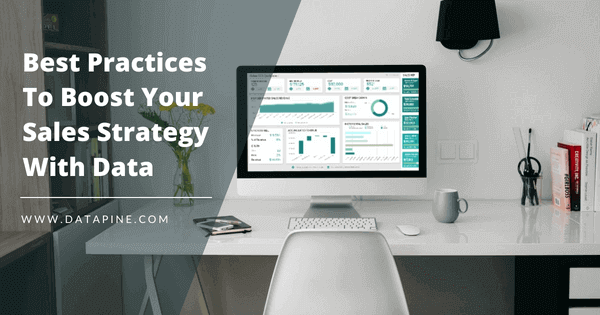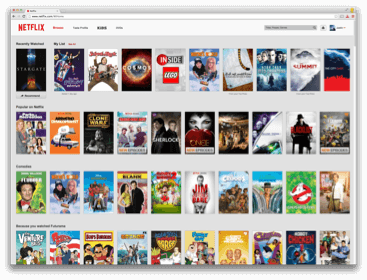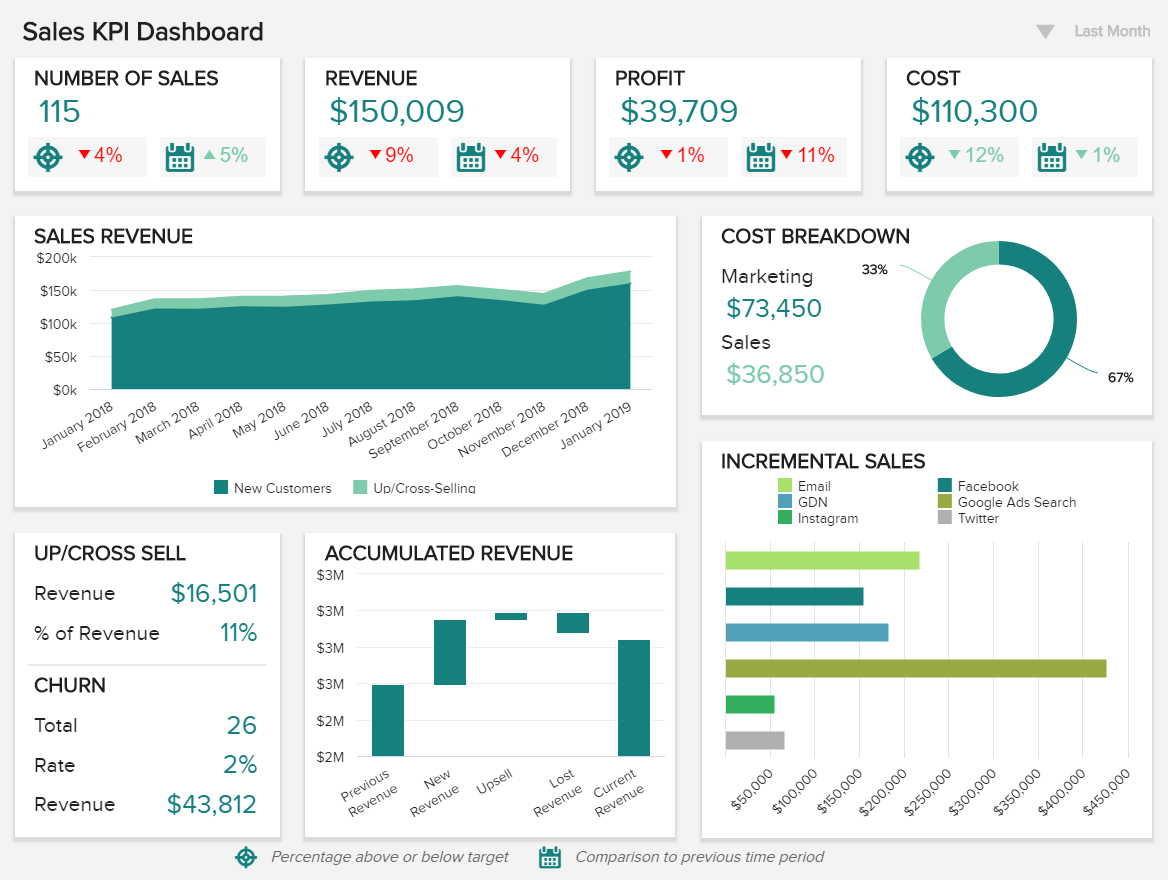5 Best Practices to Boost Your Sales Strategy With Data

Sales have always been considered an intuition-driven profession where sales reps intuitively approach and engage best-fit prospects. While this approach might have worked in the past, it can't guarantee sales success in today's hyper-competitive world.
No wonder, 61% of salespeople consider their job role more challenging than it was five years ago.
So, how can you approach the sales process to attain the best outcomes effortlessly?
Implementing a data-driven sales strategy is a sure-fire way to acquire quality leads and identify business opportunities. It can help your team make informed sales decisions as per customer preferences, competitor activity, and market changes.
With accurate business data, your sales reps can gain actionable insights into your business and target the best-fit prospects, thereby boosting their conversions.
In this post, we will share five best practices to boost sales strategy with data.
#1: Maximize Your Outreach through Effective Segmentation
A recent survey revealed that more than 50% of prospects are misfits for the product. This means the sales prospecting process consumes enormous time and effort of sales reps without delivering expected outcomes.
The reason is one size doesn't fit all. Approaching random people can't help acquire quality leads.
That's where customer segmentation can help.
Customer segmentation is a business approach that requires dividing the entire target market into small groups of potential customers with similar needs, interests, and preferences. It allows sales reps to understand and analyze the target market, thereby offering them the right product fit.
With the segmentation data, your sales team can plan a solid sales strategy and target the most relevant segments.
Here are a few approaches to segment the target audience.
- Demographic: Segmenting the target audience according to age, sex, race, occupation, and more.
- Geographic: Dividing the audience by geographic zones, such as region, state, city, or country.
- Behavioral: Dividing them per their response towards products and services.
- Cultural: Splitting the target audience as per their cultural origin or education.
- Psychographic: Segmenting by their activities, opinions, and more.
Take the approach that best suits your business.
For instance, if you are a sunscreen brand, geographic segmentation data can work wonders for you. It can help you identify hot areas or the ones with beaches to reach the most relevant audience. You may further break down the segmentation using audience demographics to target a particular section of males/females as per their age and preferences.
How effective is this method?
A recent LinkedIn State of Sales report stated that 56% of sales professionals using segmentation data could accurately target quality prospects. Thus, segmentation data can be a game-changer for your business.
Count on marketing BI tools like datapine to get a 360-degree view of your customers and segment them based on their service preferences, a category like new or existing customers, or the nature of their issues.
This will empower your sales team to make informed decisions, thereby delivering a tailored brand experience.
#2: Customize and Price the Products Right
Product customization and competitive pricing are the most vital elements for sales success.
Product customization refers to creating a personalized product as per the customer's requirements. For instance, you can enable customers to choose add-ons, templates, and exclusive functionalities to deliver a tailored experience. This drives customer loyalty and maximizes customer retention.
Reports affirm that companies can achieve 40% more ROI by personalizing customer experiences. No wonder, companies like Netflix offer customized homepage content according to their customers' response rate.

Besides customization, product pricing plays a pivotal role in boosting conversion rates. There are thousands of competitors selling similar products. To ensure attracting and retaining customers, you need to analyze the market and sell the products at competitive prices.
The key here is to analyze customers' data and competitors' data. Customers' data will enable you to figure out their preferences, whereas competitor analysis will help implement data-driven pricing strategies as per the market. You can also decide the pricing by considering your customers' spending patterns and feedback.
#3: Simplify the Sales Cycle
The length of the sales cycle has a direct impact on the company's bottom line.
A short sales cycle signifies a sales rep's ability to close the deal successfully in a short period. Short sales cycles thus save time and help companies close more deals, thereby resulting in high ROI and gaining a competitive edge.
Furthermore, this enables customers to receive quality service within less time and is therefore favorable for both company and customers.
How can you shorten a sales cycle?
Simplifying the sales process is the easiest way to shorten its length. If your team has appropriate customer data and an outline to reach the end goal, making sales will be a cakewalk for them.
For instance, your sales team should be well-prepared with the following set of data before approaching the prospect:
- Prospect's stage in the sales funnel
- Buying behavior and purchase record of existing customers
- Objective/requirement and budget of the prospects
Integrating a chatbot builder platform with your website, web application, or social media channels can help your team communicate and engage with the customers for collecting this data.
However, the hustle doesn't end here. Research revealed that 80% of prospects say "no" four times before agreeing to buy the product or service.
It means your team may need to visit the client's place physically several times, which is time-consuming. To cut down on back-and-forth, digital signature tools can be helpful.
Similar to handwritten signatures, e-signatures or digital signatures allow users to sign any document virtually by using unique and secured private keys. They offer security Q&A, mobile identification, verification code via SMS, and more for additional security and authentication.
How can e-signature simplify the sales process?
Integrating digital signatures with CRM software can help sales reps extract customer-related data and create final sales agreements. They can share the presentations, product demo videos, and other information to the clients with the sales agreement virtually, thereby requesting them to sign the deal.
This saves their time and effort in performing administrative work and visiting the clients to get the document signed. Besides, the clients can check all the details and complete the transaction virtually without hassles. As digital signatures are legally binding, there are zero chances of fraud.
#4: Track the Crucial Success Metrics
Sales success metrics or key performance indicators (KPIs) determine the sales team's performance by analyzing their achieved goals. Tracking these crucial measurable data or metrics can help companies identify the team's strengths and key challenges, thereby implementing a better sales strategy to ensure long-term growth.
Here are a few vital sales metrics to consider.
- Total Revenue: This is the amount of income generated from sales operations.
- Revenue by Product/Service: This is the income generated per product/service.
- Win Rates: This indicates the total number of closed deals.
- Market Penetration: This metric refers to the existing or acquired customers compared to potential customers in the market.
- Percentage of Revenue from Existing Customers: This measures the revenue generated from up-selling and cross-selling to the existing customer base.
- Percentage of Revenue from New Customers: This signifies the income generated from fresh acquired customers every quarter or month.
- Year-Over-Year Growth: This compares the yearly income generated from sales.
- Average Customer Lifetime Value (LTV): This refers to the revenue a business expects from a customer throughout their association with the company.
- Customer Churn Rate: This metric indicates the customers who discontinued using the products or services of a company.
- Net Promoter Score (NPS): This signifies how likely a customer will recommend a business to others.
Opting for an advanced and reliable sales metric dashboard is a requisite to collect, review, and analyze these metrics while maintaining accuracy. For instance, consider this sales dashboard, which enables you to track and view these metrics on a single screen, thus allowing you to make successful business decisions.
Notice the state-of-the-art sales cycle length visualizations that this tool offers. Utilizing this data, you can keep a tab on all sales operations and maximize profits.
**click to enlarge**
#5: Provide Ongoing Sales Training
According to HubSpot's latest Global Sales Enablement Survey, 40% of organizations failed to achieve revenue goals.
The reason is not being able to adapt their sales process as per the market changes.
Ongoing training helps salespeople keep up with market trends and upgrade their work strategies with the latest insights. This minimizes knowledge gaps and enforces a data-driven mindset, thereby enhancing their skillsets and productivity.
Research advocates that sales training can improve win rates by 29%, which is massive. Understanding the need for ongoing training, 71% of companies have invested in online training courses for their employees.
To ensure your team's best performance, consider providing them with ongoing training.
Collect industry insights and data and host training sessions at regular intervals to notify employees of any changes. Address their challenges and invest in tools and technology that can simplify the sales cycle. This practice will pay huge dividends in the long term.
Conclusion
Sales is no longer an intuition-led game. Data is vital to make informed decisions and streamline the work processes of sales reps.
The shared data-driven sales strategies and practices depict how data can save the sales team's time and effort in acquiring and converting leads.
So, implement these practices to leverage the power of data and maximize your ROI and profits.
Author Bio:
Hazel Raoult is a freelance marketing writer and works with PRmention. She has 6+ years of experience in writing about business, entrepreneurship, marketing, and all things SaaS. Hazel loves to split her time between writing, editing, and hanging out with her family.
